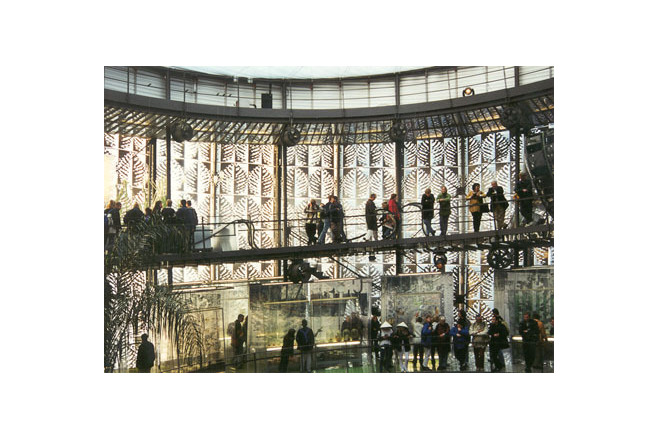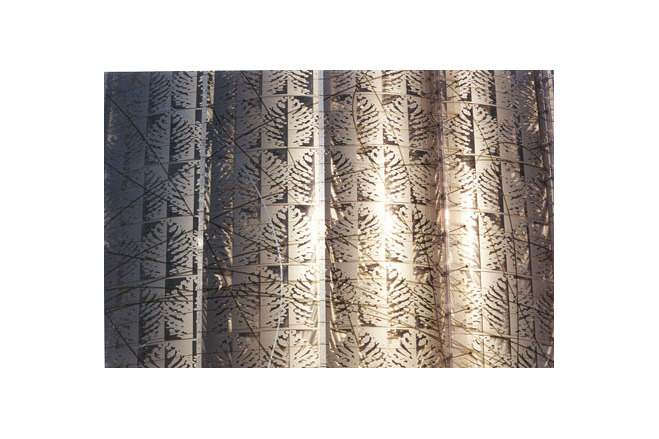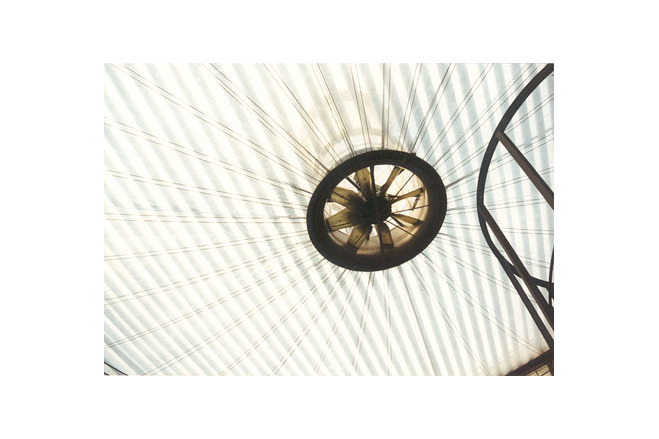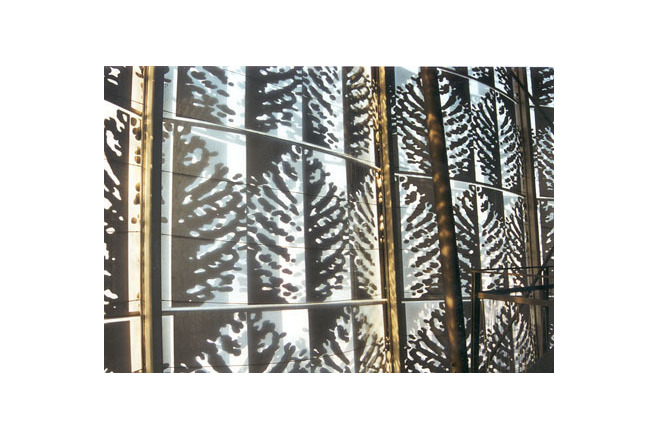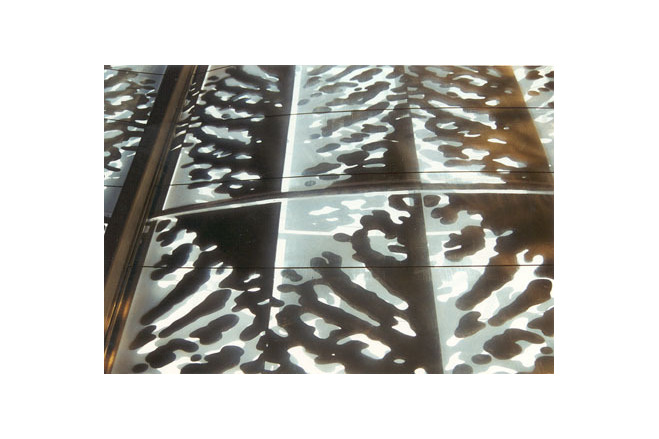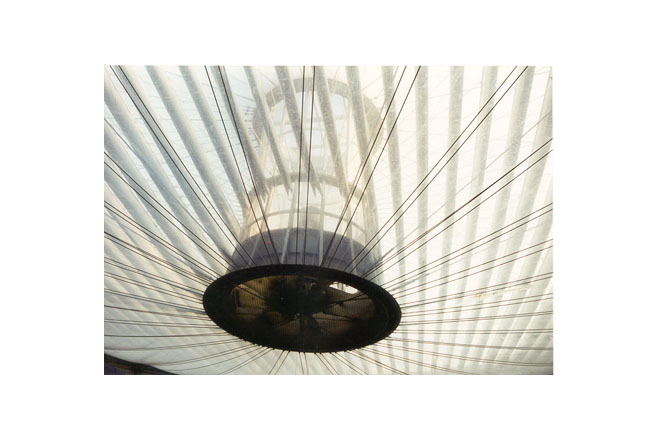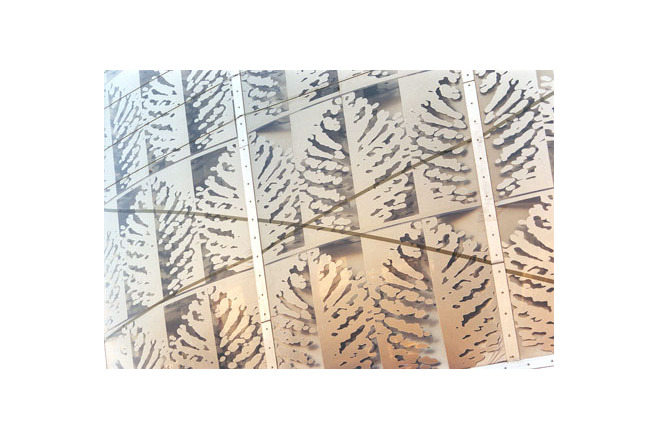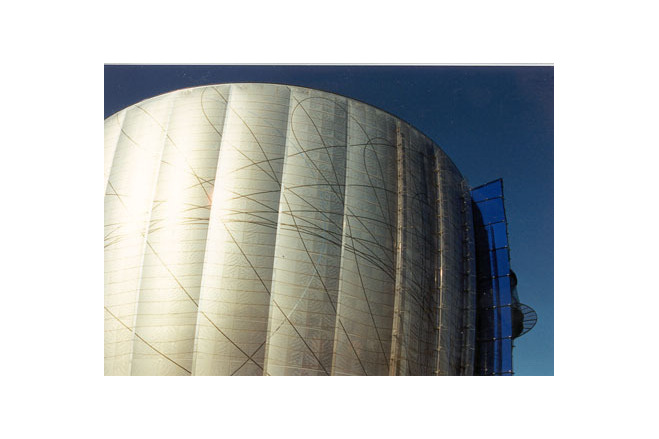Cycle Bowl, Expo 2000 Pavilion
General information
-
Home page
http://www.foiltec.com/projects/duales/
-
Location address
Hanover
-
Location country
Germany
-
Year of construction
2000
- Function of building
-
Degree of enclosure
Fully enclosed structure
-
Climatic zone
Temperate - cold winters and mild summers
-
Number of layers
mono-layer
-
Primary function of the tensile structure
- Daylight gains
- Rain protection
- Space defining elements
- Sun protection
- Wind protection
Description
For the World Exposition 2000 in Hanover, Germany, the "Duales System? (a German recycling project) had a pavilion that utilized Texlon Foil Systems for both wall and roof envelopes. The wall system had a positive/ negative leaf pattern printed on the outer two of the three-layer system. These foil cushions, with a 3% pattern overlap, were pneumatically able to transform the wall envelope from a translucent to an opaque system? allowing for the dramatic presentation of a tornado to be performed within. After each performance, the wall would then transform back to a 45% transparent state. The roof of this pavilion was the world?s largest foil cushion, 82 feet in diameter, and it featured a series of fabric tubes within the system that with various air-pressure could expand or contract to adjust its transparency with relation to the performance.
Description of the environmental conditions
Foiltec was selected for the design and manufacture of the pavilion?s envelope not only for its variable transparency technologies but also for its ecological characteristics. Not only are the materials in Foiltec systems ?green,? but even more profound are the sustainable design opportunities afforded. The foil products have an extremely low energy consumption during their manufacturing process; and the complete system weighs between 50 and 90 percent less than systems made from other materials with comparable properties? further conserving on the structural system needed to support the cladding. Part of the system is manufactured from recycled materials and the entire system can ultimately be returned to our facility to be recycled at the end of the project's life. The architect can explore green or sustainable design solutions for responsive, intelligent day lighting and dynamic thermal properties that can alter spatial characteristics and building performance. These opportunities and capabilities put Foiltec Systems in a category to themselves.
Material of the cover
-
Cable-net/Fabric/Hybrid/Foil
Foil
-
Material Fabric/Foil
ETFE-foil
Main dimensions and form
-
Form single element
Synclastic
-
Form entire structure
Synclastic
Duration of use
-
Temporary or permanent structure
Temporary
Involved companies
-
Architects
Atelier Uwe Bruckner
-
Engineers
IPL Ingenieurplanung Leichtbau GmbH
form TL ingenieure für tragwerk und leichtbau gmbh
-
Contractors
Vector Foiltec GmbH
Editor
-
Editor
Marijke M. Mollaert


